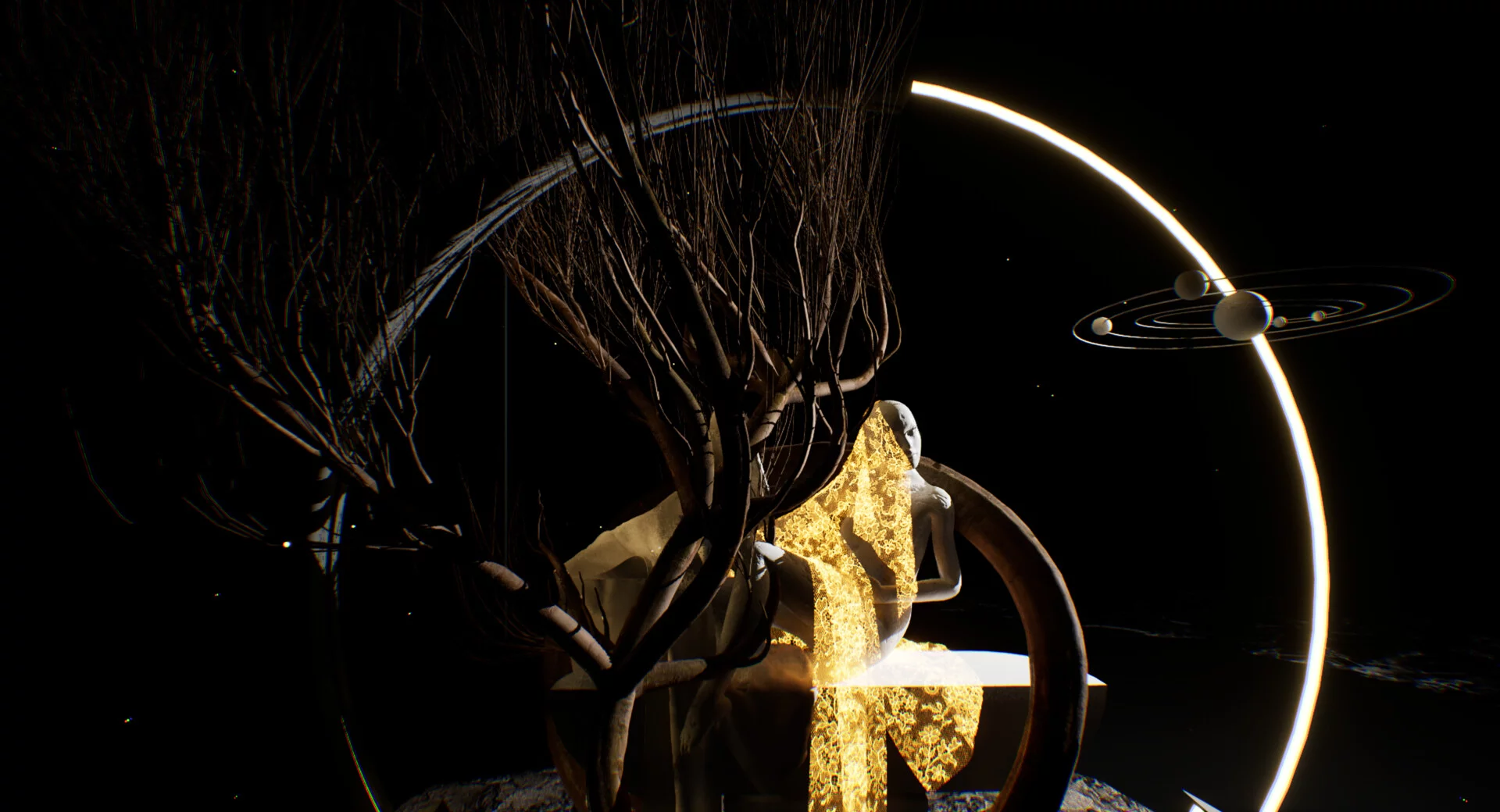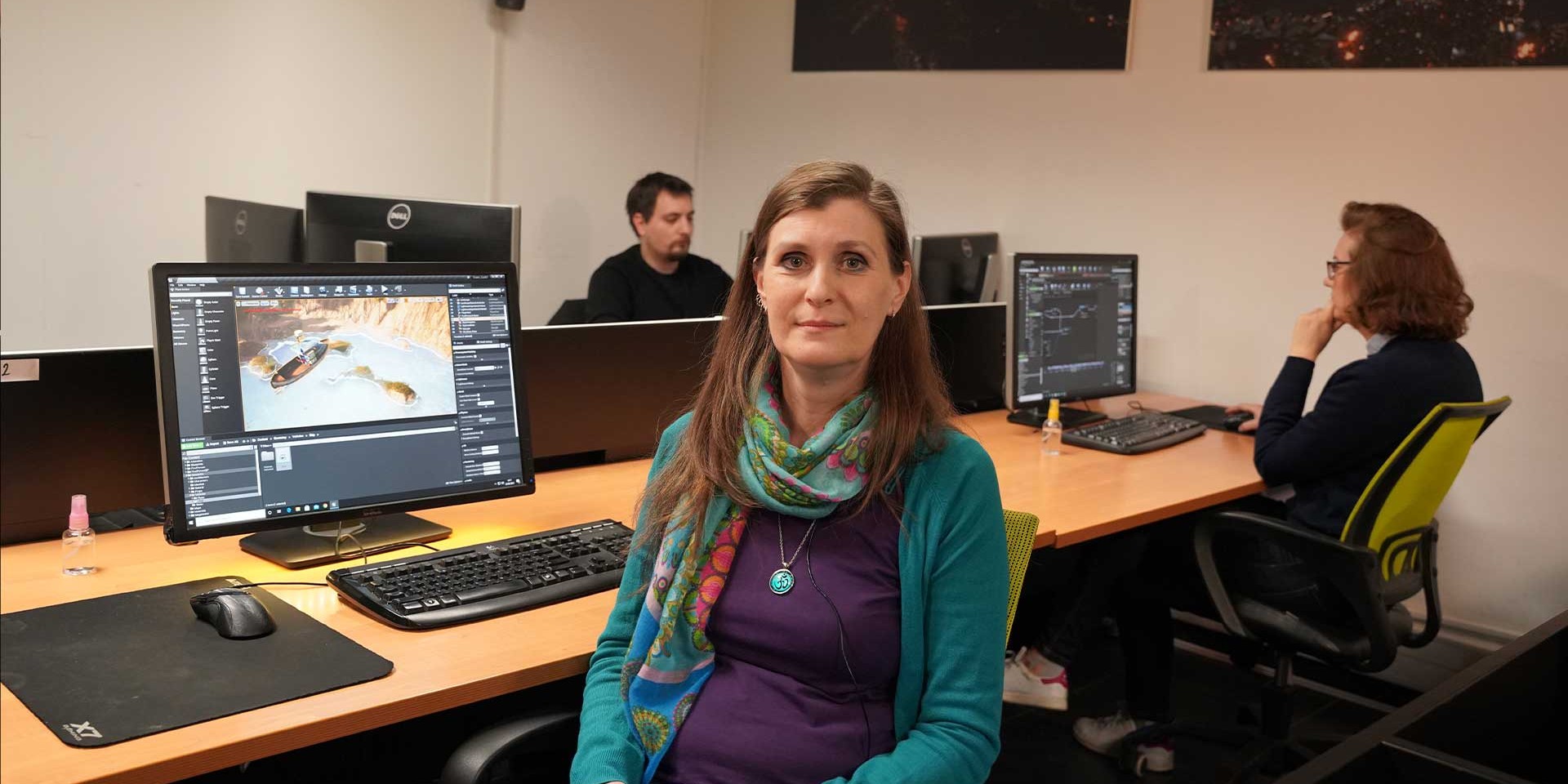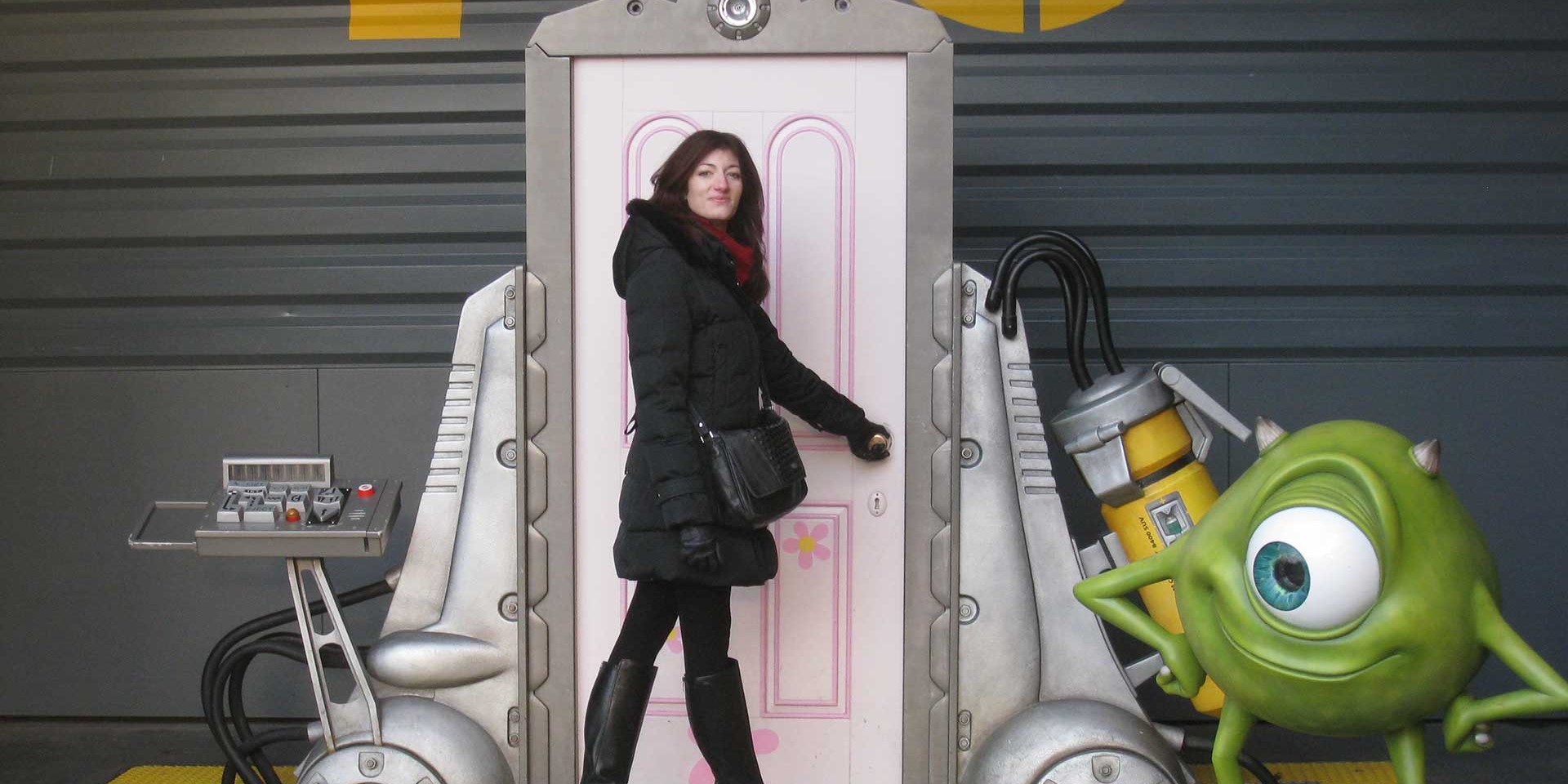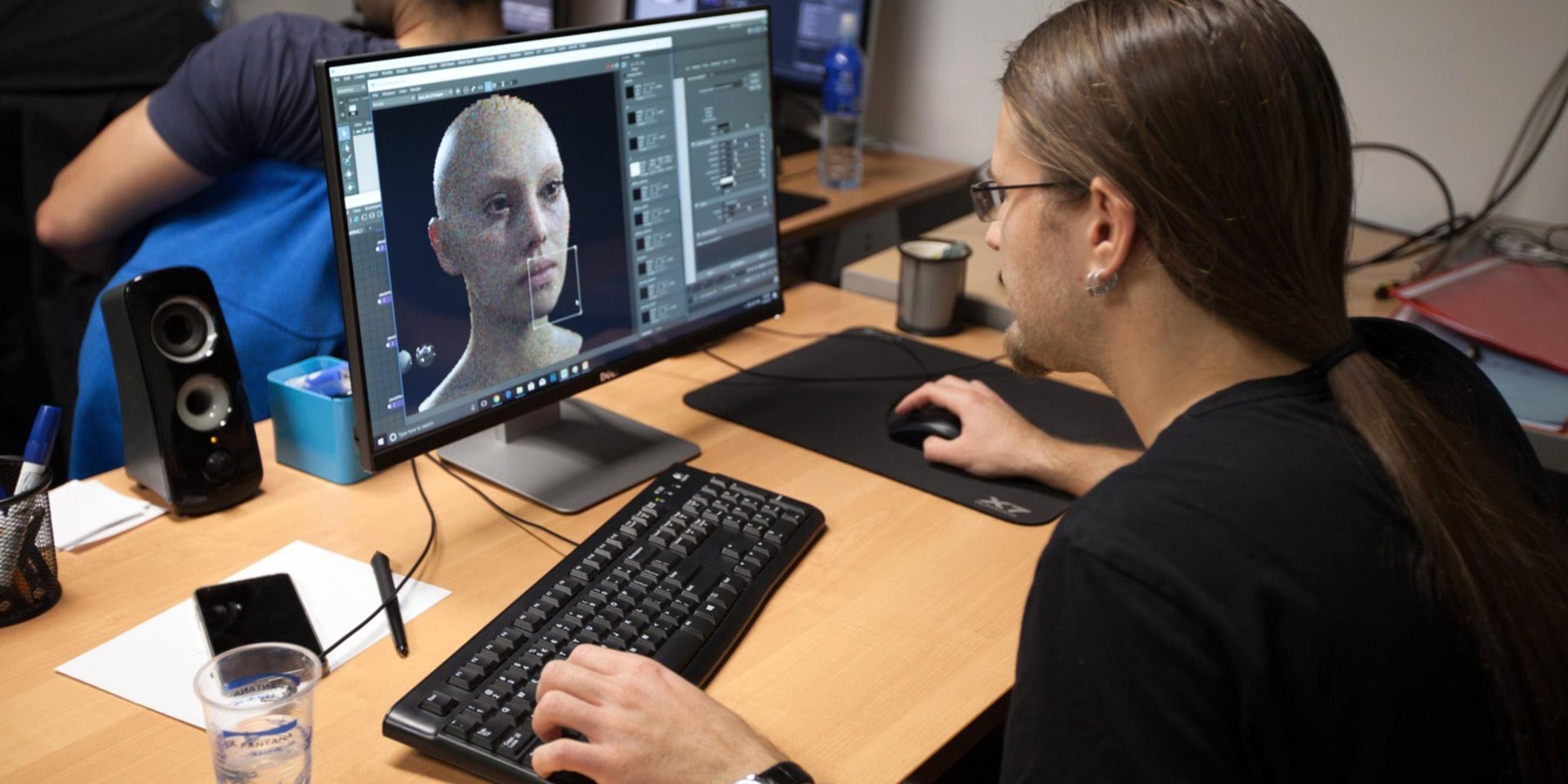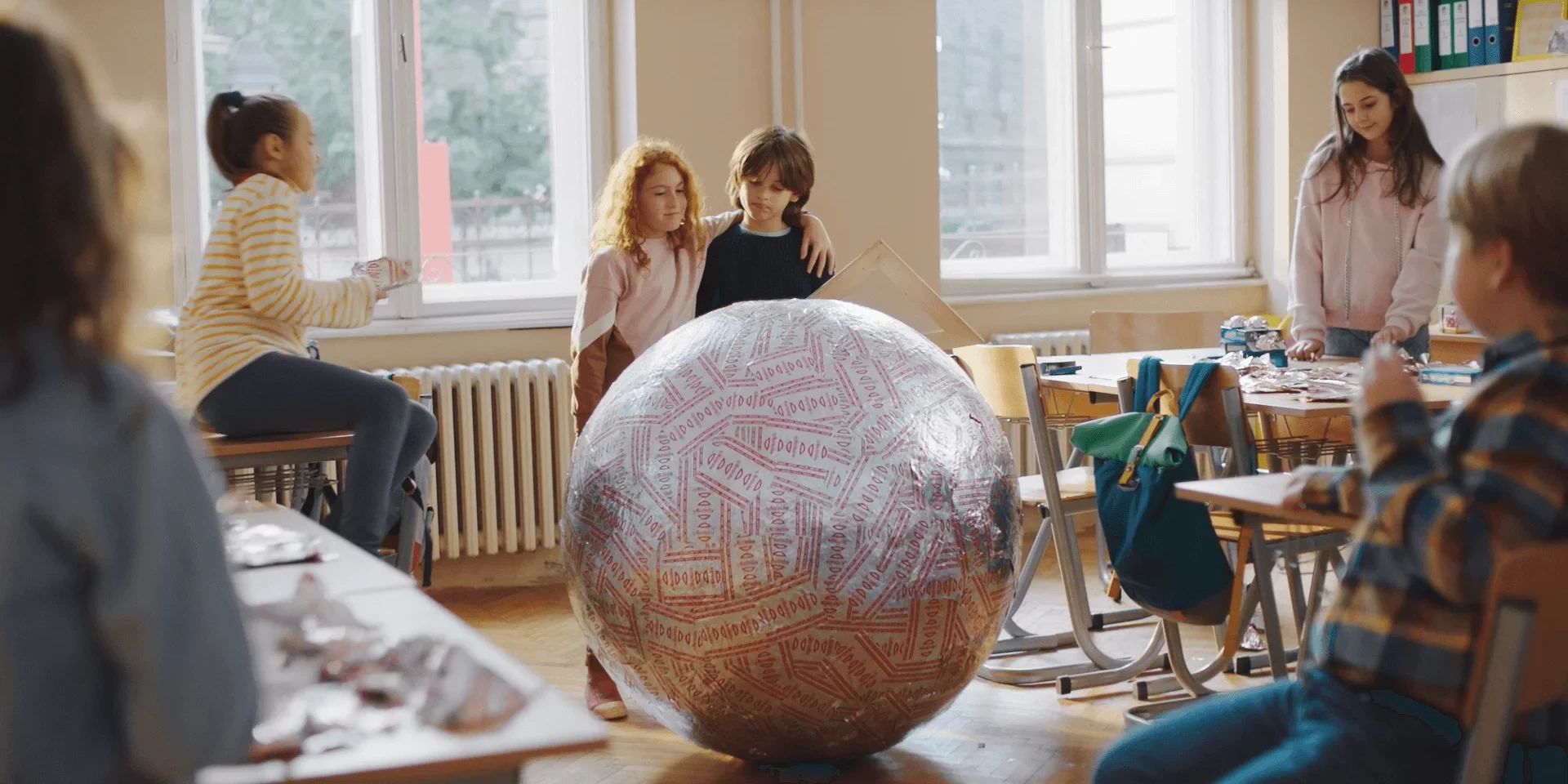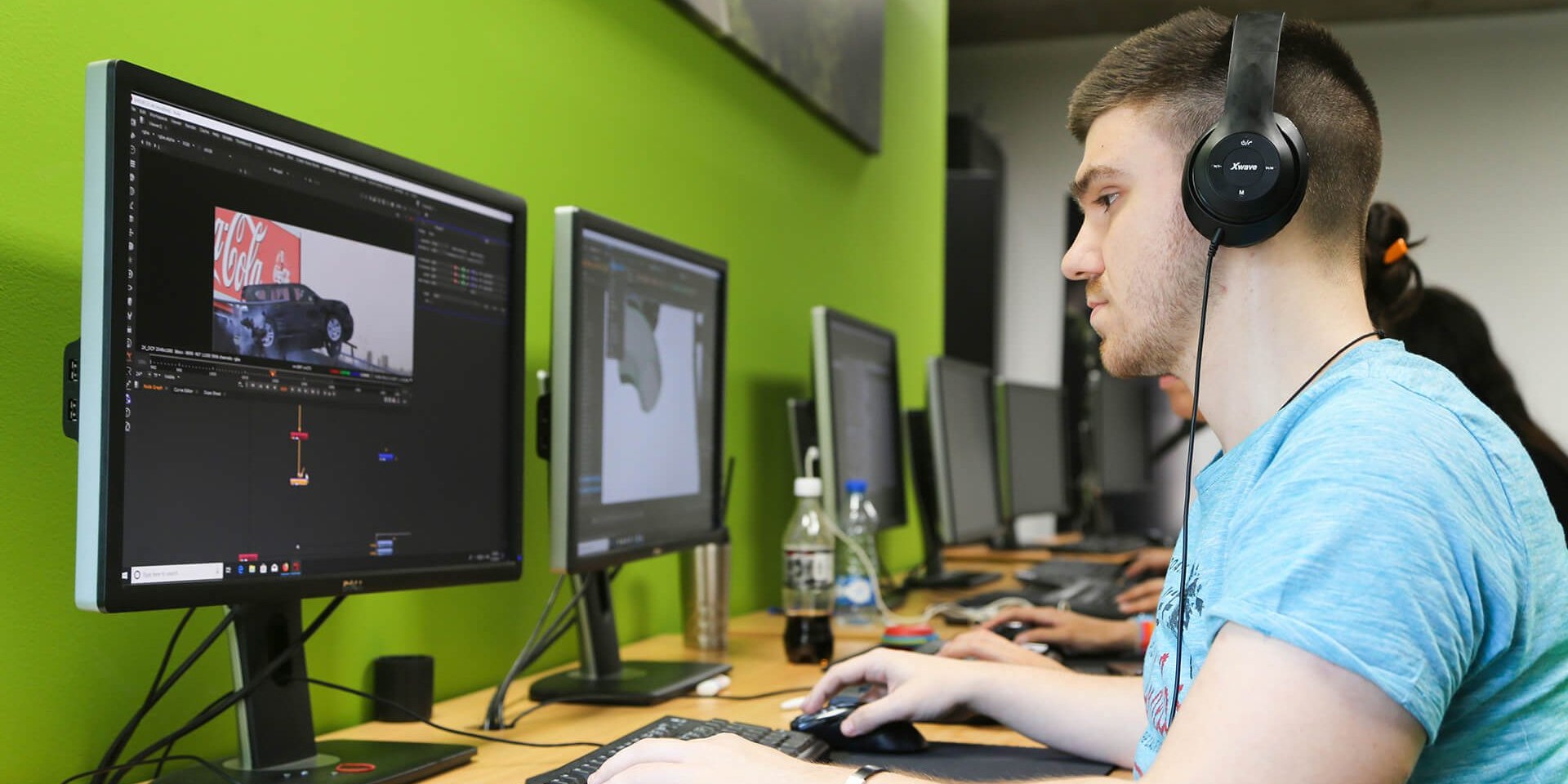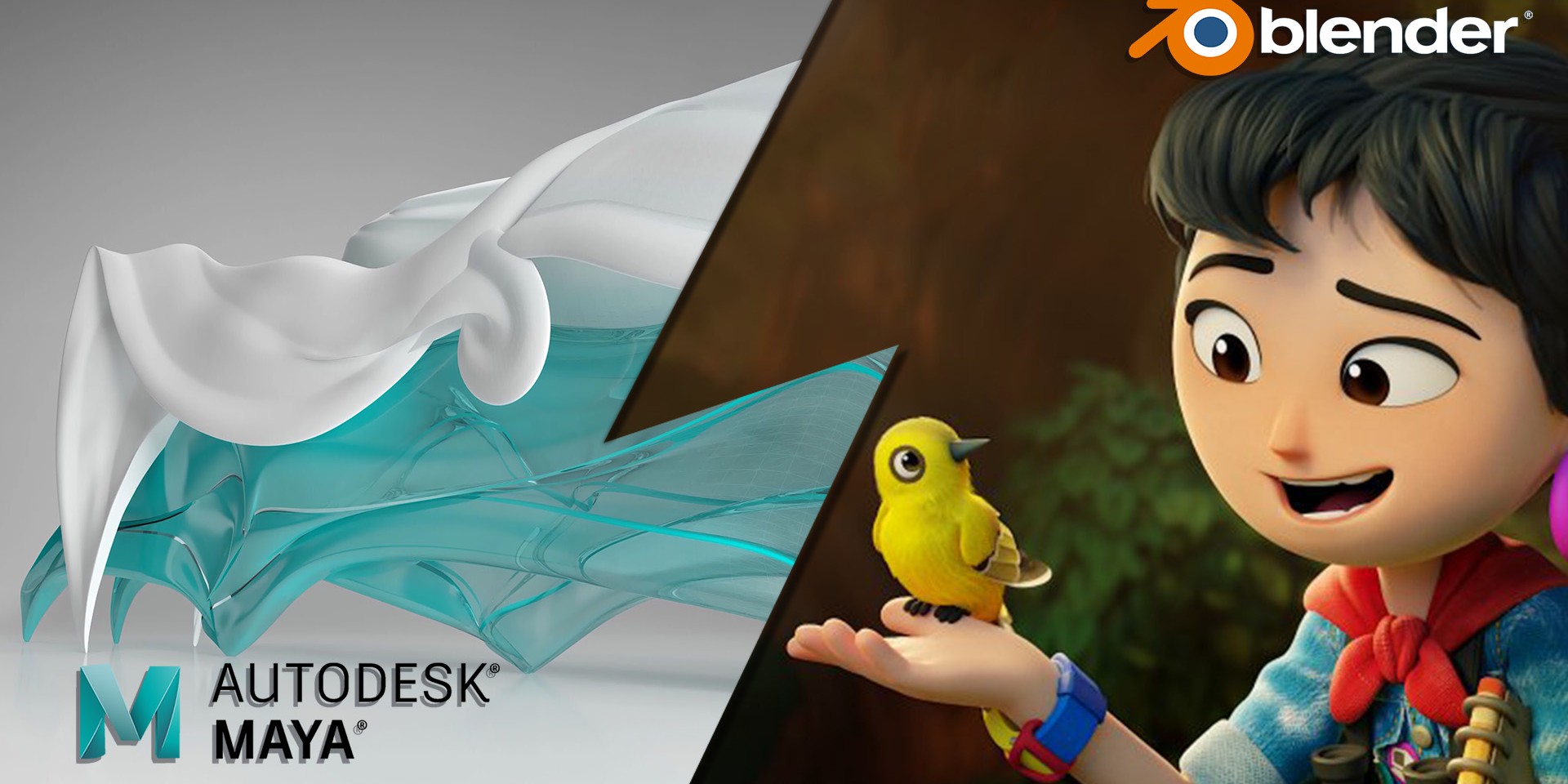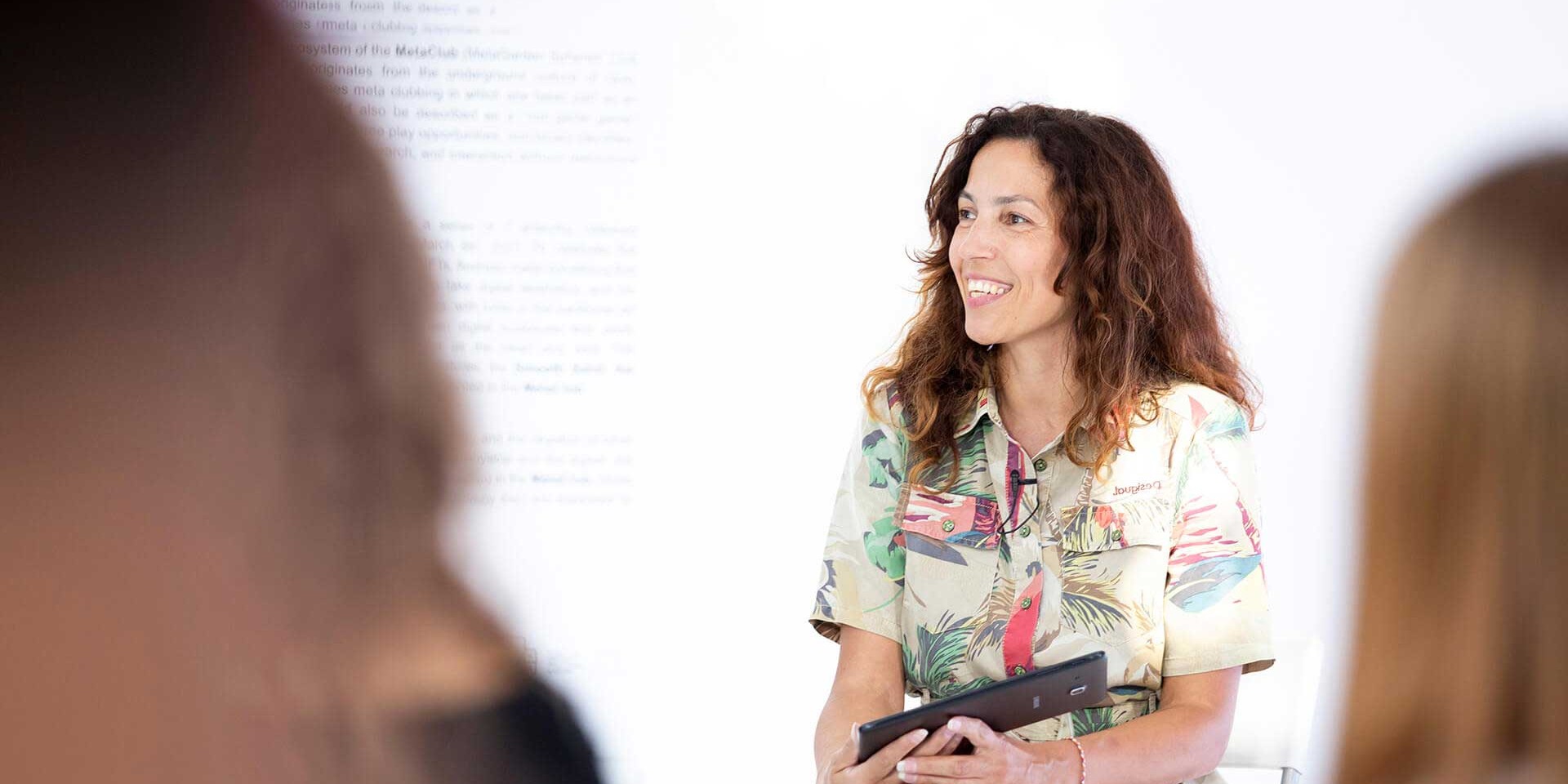Milan Ličina: The point of it all is to create your own challenges using Unreal Engine
We sit down with the lecturer whose teachings have blown the minds of the Unreal Engine Essentials course students to talk about his approach to education, the art of designing interactive experiences with a sprinkle of some really cool needlepoint.
Milan Ličina is a new media designer and creative technologist from Belgrade. Apart from being hired as a docent on the Faculty of Digital Arts at the Metropolitan University, he is also a part of the innovative collective of Galerija 12. He started his career as a CGI generalist and today celebrates his anniversary of work in the industry. It is for these reasons that it is a huge honor that Milan joined Crater’s assembly hall this spring in a role of a lecturer on a course that explores the possibilities of a powerful tool that is Unreal Engine..
You are most likely to find Milan on long walks with his dog around Belgrade, at an interesting exposition, or in a tight crowd of a concert, especially if you love post-black metal (with a slice of the Doom gaze). And it is without a doubt that you will, in any aforementioned situations, find a common topic to talk about for ages. This is exactly what we have done, marking the end of the summer semester at Crater.
You made the transition from graphic design to interactive media amidst your studies. Why made you decide on that move?
– I graduated in the design of industrial products and graphic design from Belgrade Polytechnic. I chose interactive media as my major above all else because I wanted to specialize in design and technology, which was becoming more and more interesting to me when I was a student. At that time a few relevant festivals have been popping up, such as Resonate, that were frequently visited by artists that were connecting technology and computer sciences with art. It wasn’t long before I followed in their footsteps because, as an industrial designer, I was taught to design the form and function of a product that is first and foremost useful, as well as highly esthetic. Graphic design has taught me to visually communicate my ideas, and then somehow combine them into product design, resulting in interactivity. I’ve always had a nick for mashing things together to see what happens, just like Rocket Raccoon said: “We could just get it first and improvise”.
You present yourself as a creative technologist, which is somewhat an unusual profession. Could you elaborate on it further?
– Creative technologist is a designer that has mastered the technical-technological aspects of the industry in which he can create and participate in both processes – art and technical. Or, it is a programmer with high visual sensibility. In the world of new media, this is a title that combines Technical Design and Technical Art positions, which is especially common in the industry of video games and visual effects, but it also brings with itself certain creative and art decisions.
– For years I have been a part of the content creation team at Galerija 12, where I was working as a generalist. But as my interests were leaning towards experimentation in technology development, testing the boundaries of what technology has to offer, and using that to create those unique scene-visual experiences of ours. With this, my role was changing accordingly. Today I am a part of the research and development process, as well as integration, where the usage of a gaming engine is more than useful. Transitioning to real-time graphics was the next logical step.
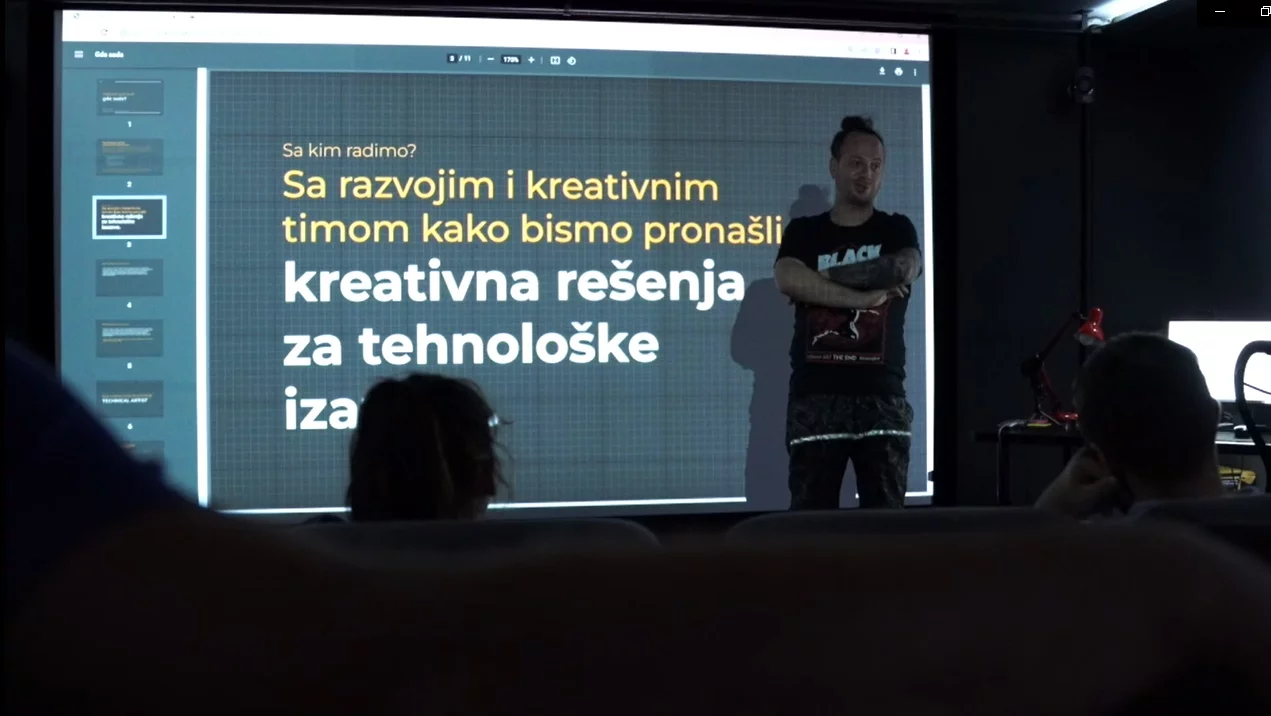
You have basically perfected your skills in Unity for years on end.
– Unity was my native engine, but at that moment when Unreal Engine 4 became available to everybody, getting familiar with that kind of technology was a no-brainer for me. Contrary to popular opinion, for me, the same set of rules applies for both of them, because for me as an artist it is key to work modularly and to have an insight into the scalability of the project, which is something both engines provide. Unreal Engine, even though free, comes with a certain set of rules that not every client is ready to comply with. Unity is however directed at a completely different angle and that engine is much easier to optimize. I would say that the creators of these two tools realized that they can’t go against each other, and instead opted for aiming for filling in two different needs in the market.
What feature of UE5 do you think amazed your students the most now during the course? What did they like the most?
– Blueprints, without a doubt! The specificity of this course is that the students got a chance to talk to somebody who does visual and interactive programming firsthand. With that said, I use engines for the necessity of creating an interactive design, in other words, I am not developing video games, but rather activations. When I manage to show that you don’t necessarily have to build a shooter game in the engine, but rather activate anything and everything in your virtual set, people are quite pleased. Even though my making is not focused on gaming, the logic and mechanic used in games is absolutely the same as the activation logic that I use in my professional work, having just a different output. Whether you are working on an exhibition or a video game, the mechanics that are utilized on the project are identical.
– The students had very positive feedback on the procedural design as well. I’ve shown them how to generate terrain and texture it automatically by parameterization of certain values because the outcome of the course has been set in a way that by completing the course, students can become generalists, which I regard as a big advantage considering that I have worked as a CGI generalist for plenty of years.
Was this approach suitable for everybody, considering how diverse your group was?
– The energy of the group was really good. We had students with almost no prior experience, as well as trained professionals who have been working in the industry for 15 to 20 years, and they all had a common goal of expanding their knowledge and wanting to hear what a fellow colleague in the industry has to say on their native tongue. They all knew how to create something, and how to model, but they were interested in how an experienced professional approaches obstacles because we are not all starting from the same position when beginning a new project. I was blown away by the fact that there were no feelings of being lesser than others in the group when it was to happen that a student isn’t familiar with something. They were all supporting one another, and have insisted that every term gets a further explanation even if it is not directly tied to Unreal Engine, but plays an important role in the process.
– People with the least experience that arrived like tabula rasa have shown to be the most diligent by the middle of the course. They improved significantly faster because they have invested time between classes to further educate themselves. The width of the knowledge they have received has further surpassed the reason they enrolled in the first place because they got my 10 years of experience condensed, which is something I can say with zero prepotencys.
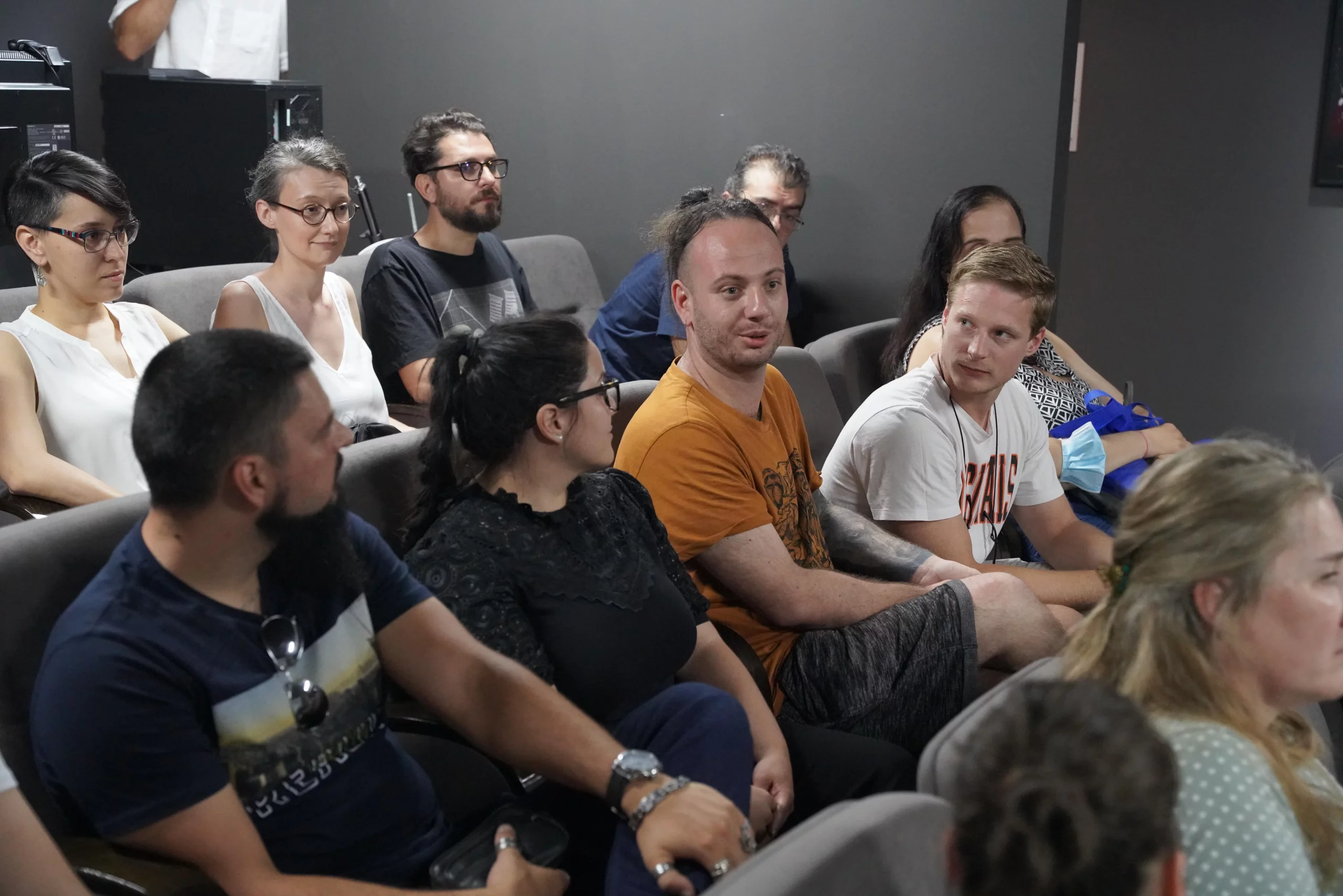
Was it challenging having this kind of diverse group of students? Better said, was it difficult to balance your lectures equally so that everyone can follow along and, in a sense, do the best that they can?
– I think that the biggest challenge was to get them adjusted to my tempo. This is not regarding speed, but the fact that Unreal Engine Essentials is not a project-orientated course. It was created with the goal of helping students understand how the tool operates, and all that it offers so they can ask further questions, give it purpose and create their own challenges. There were a few people that came to the course to create their own pipelines for their studios, one student that works in the army had amazing questions regarding optimization, and we had one teenager that was connecting the dots rather impressively. One student, an archaeologist, enrolled intending to create a visualization of a monastery that he had 3D scanned because he sees amazing potential in applying real-time graphics for materializing the worlds that once existed – which is somewhat in line with what I do. They all actually came here so their careers would benefit from Unreal, but somewhere along the way, they realized that they can advance on a personal level too, make some of their ideas come true, and it was beautiful to witness that.
What advice would you give to people regarding further education, and what do you want to learn yourself?
– Whatever job they are doing today, we have come to a point where there is no stagnation. If you want to be up-to-date, and fair to yourself, you will always follow trends. Never should you stop studying, only switch the aspect of what you are studying, but you cannot allow yourself to not be up to date in your field, whether that would be CGI or something else. In this day and age with the internet, it’s possible to connect with people that are doing similar things or ones you see as high-quality coworkers or influencers.
– In our industry, you ought to keep up to date with metahumans technology because that’s a very interesting way of speeding up and automatizing certain things. I am under the impression that locally we are the least “suppled” when it comes to animation and rigging – purely because we don’t have enough specialists in these fields. On the other hand, we have a local product that supplies them. MetaHuman, a tool developed by 3Lateral, a team that recently joined the Epic family, is not just a success story, but a story about the fact that we have a local team that developed globally successful software for motion capture/ facial animation capture that needs to be studied from. One should keep an eye for their next product because they obviously are masters at their craft.
– If we are talking about formal education, I am still at the precipice of a doctorate degree, only having left the doctorate exhibition and dissertation 🙂
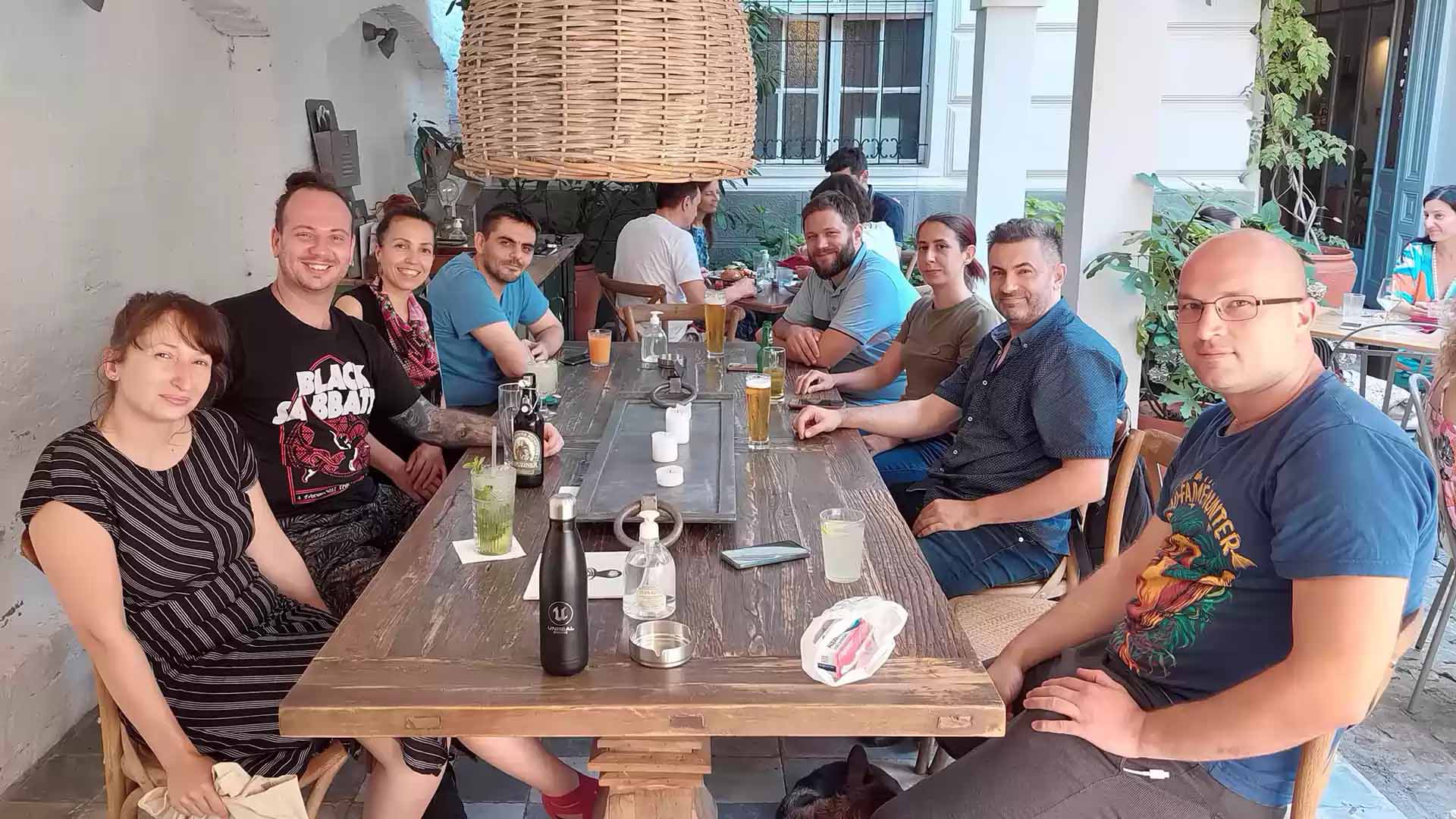
You have been collaborating with Galerija 12 for almost 7 years, working on interdisciplinary events on a global scale. Can you highlight a few dear-to-heart projects that you established with this collective?
– The first big project that I participated in was the world tournament in drone racing, World Drone Prix 2016 when this whole industry was expanding. All of our exhibitions that are currently active, and by that I mostly refer to our section at the Museum of the Future in Dubai, represent the crown of our collective creative and productional strain.
– We are always trying to achieve the next level of visual quality on these projects, and the fundamental goal is what we actually want to achieve with a creative concept. Probably the biggest satisfaction of this job is to see the attendees truly believe they are there at those places due to the credibility of production and the quality of the narrative. When that resonates with them, they display emotions just like when they attend a theater play or a concert, which means that, above all else, they learned something new about themselves.
Can you highlight a few exhibitions and events that you have been particularly amazed by?
– I was blown away by a recently held exhibition of needlepoint at the Ethnographic museum. When you take a look at how someone used media like sewing and puncturing as a means of creating highly complex compositions, it’s fascinating. When it comes to interactive exhibitions, I really liked the Saudi Arabia Pavilion and Switzerland at the Dubai Expo. Both states have demonstrated their heirloom intellectually, with a lesser usage of technology. The swiss received an award as a state with the most innovations, and they presented this highly simplistic through the motive of drops – because for them ideas are dropping everywhere. The Saudi Arabia Pavillion is, on the other hand, completely high-tech, but was based on an intelligent concept. They used ornaments that are present in their folklore, but the final impression was that we are entering the vision of Saudi Arabia itself like it’s some sort of introspective exhibition, which was a breath of fresh air.

